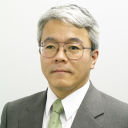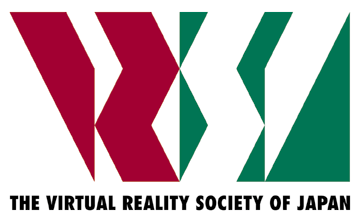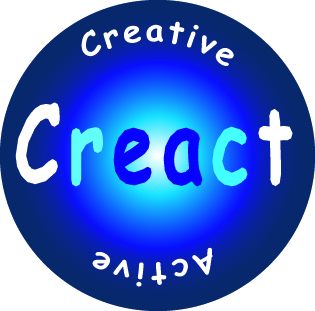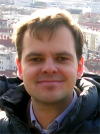Keynote Information
Keynote 1 (Nov. 14, Wed., 9:15-10:15)
Upscaling and Downscaling Augmented Reality
Dieter Schmalstieg, Graz University of Technology, Austria
Bio
Dieter Schmalstieg is full professor of Virtual Reality and Computer Graphics at Graz University of Technology, Austria, where he directs the "Studierstube" research project on augmented reality. His current research interests are augmented reality, virtual reality, distributed graphics, 3D user interfaces, and ubiquitous computing. He received Dipl.-Ing. (1993), Dr. techn. (1997) and Habilitation (2001) degrees from Vienna University of Technology. He is author and co-author of over 100 reviewed scientific publications, member of the editorial advisory board member of computers & graphics, member of the steering committee of the IEEE International Symposium on Mixed and Augmented Reality, chair of the EUROGRAPHICS working group on Virtual Environments, and advisor of the K-Plus Competence Center for Virtual Reality and Visualization in Vienna. In 2002, he received the START career award presented by the Austrian Science Fund.
Abstract
Despite great advances in core technology, Augmented Reality (AR) still has to cover some ground in order to prove its value as a mainstream technology. Partly this can be attributed to difficulties originating in scale problems. For example, the amount of data for covering wide physical areas with AR content is too big to be handled manually. Mobile AR equipment is often too heavy and too expensive for casual users. This talk will focus on technology and experiences to address some of these issues. Handheld AR running on small devices, in particular smartphones, promises to provide more scalable AR - more lightweight, more discreet, more affordable and more collaborative. Authoring and modeling tools address the problem of scalable content creation. The talk will also present application examples which make use of these new possibilities.
Keynote 2 (Nov. 15, Thu., 9:00-10:00)
Mixed and Augmented Reality in Broadcasting
Seiki Inoue, NHK Science & Technical Research Laboratories

Bio
Seiki Inoue is a senior research engineer in NHK Science & Tech. Research Labs. He is a leader of the group of Visual Expression & Technology where they research virtual studio, intelligent robot camera and text-to-video techonology (TVML: TV program Making Language). He got B.S. degree in electrical engineering, M.S. and Ph.D. degrees in electronics engineering all from Univ. of Tokyo in 1978, 1980 and 1992, respectively. He joined NHK in 1980 and moved to Science & Tech. Research Labs. in 1983. From 1995 to 1998, he worked for ATR Media Integration & Communications Research Labs. From 2002 to 2005, he worked at NHK Broadcast Engineering Department. His research interests include image and video processing, CG and visual expression.
Abstract
This talk will introduce examples of video synthesis in broadcasting from the viewpoint of mixed and augmented reality. In broadcasting programs, virtual studio in which camera shot video and CG are synthesized according to the camerawork of the camera is widely used. The talk will introduce the history of development and research about virtual studio, for example, Synthevision using HDTV video as wider background, co-starring of CG and real actors, image-based virtual sets, immersive virtual studio and recent application to live sport program. The talk also introduces the special camera, AxiVision which can get depth video for three dimensional synthesis, the robot camera which can be easily used for virtual studio, and Invisible Panel which can support performers in virtual studio. The talk includes the possibility of TVML (TV program Making Language) for virtual studio, which can easily generate CG character animation and speech synthesis in realtime.











